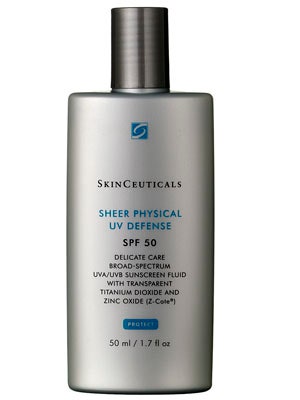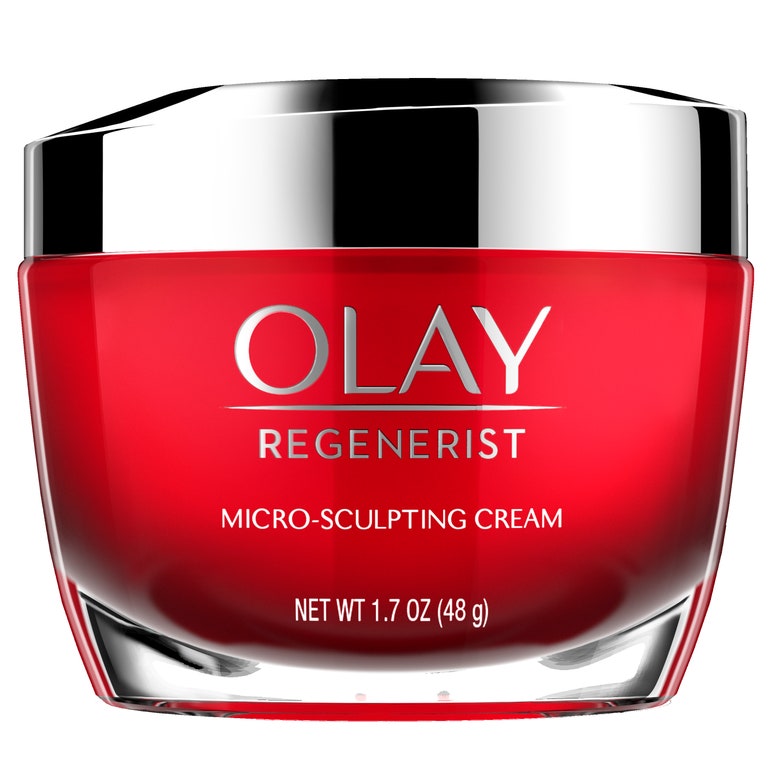All products are independently selected by our editors. If you buy something, we may earn an affiliate commission.
Even the most well-informed and highly skeptical skin-care users (i.e., dermatologists) are buying into these buzzy treatments. Here, we've rounded up the best dermatologist-approved tips and tricks to try for your best-looking skin yet.
They’re Not Immune to the Hype
Sometimes buzz, hype, and a Instagram blitz happen for a reason—because a treatment is effective and safe. These are three the pros stand by.
Double-cleansing. Washing your face twice—with an oil-based cleanser followed by a water-based one—is a trend. But for Whitney Bowe, a dermatologist in New York City, it’s just part of her skin-care regimen. “Double-cleansing can preserve collagen,” she says. Sure, that sounds like a tall order, but Bowe uses a DIY oil cleanser to dissolve makeup easily without the rubbing “that can age your skin.” She even takes off her mascara with the oil so she doesn’t have to tug on her lashes—“they’ve gotten thinner with age, so they fall out more easily.” Her recipe: two tablespoons of olive oil stirred into eight ounces of aloe vera water. She follows that with Cetaphil Gentle Skin Cleanser Face & Body to finish the job.
Vampire facials. OK, doctors actually call them “platelet-rich plasma injections,” but you’re probably more familiar with the Kardashian-popularized term. (In case you missed that episode: The treatment involves injecting extracts from a patient’s own blood back into her skin using tiny needles.) It seems bonkers/creepy, but “injecting plasma-rich platelets, which are full of stem cells, could help build new collagen,” says Marie Jhin, a dermatologist in San Francisco. “And replacing collagen in your skin as you age is a continuous battle.” She does the treatments on herself twice a year; Bowe does the same.
CoolSculpting. This device destroys fat cells with extreme cold—in about an hour. The technique is called cryolipolysis, and it works best on small areas of fat, says Karyn Grossman, a dermatologist in Los Angeles. “I was happy with my overall weight, but fat had accumulated around my upper back and one hip. Two cycles of CoolSculpting completely changed the way my dress fit for my son’s bar mitzvah,” she says.
They’re Serious About Sun Protection
If you remember only one thing from this story, remember this: Sunscreen is nonnegotiable. It helps prevent skin cancer, and people who wear it have 24 percent fewer signs of aging than those who don’t, according to a study published in Annals of Internal Medicine. Dermatologists apply it every day, more than once, rain or shine. And they have a few things to say on the matter.
For sheer coverage: Too many sunscreens look obvious on skin of color. “They don’t blend in, or they make my skin look gray or purple,” says Jeanine Downie, a dermatologist—and an African-American woman—in Montclair, New Jersey. Her solution: SkinMedica Total Defense + Repair Broad Spectrum SPF 34 Sunscreen. “I wear it on my face, my neck, my ears, and the back of my hands every day,” she says. “It’s very sheer, and I reapply it.” For medium skin tones, Mona Gohara, a dermatologist in Danbury, Connecticut, who is Egyptian, says La Roche-Posay Anthelios SPF 30 soaks in very quickly and doesn’t leave a chalky cast.
For sensitive skin: “I have rosacea and sensitive skin, so I use mineral sunscreens, which are gentler than chemical ones,” says Elizabeth Tanzi, a dermatologist in Chevy Chase, Maryland, who likes
.
For lasting protection: Bowe and Gohara carry around the Colorescience Loose Mineral Foundation SPF 20 Powder Brush for touch-ups over makeup. It contains iron oxides, and “a recent study showed that sunscreens with iron oxides prevent melasma better than formulas without them,” says Gohara. It’s really (really) important to know, however, that powders are supplements to, not replacements for, traditional sunscreen lotions and creams. Ellen Marmur, a dermatologist in New York City and a premelanoma survivor, applies a tinted formula with SPF, like Chanel Vitalumière Moisture-Rich Radiance Sunscreen Fluid Makeup Broad Spectrum SPF 15, each morning—and then reapplies it over her makeup before going outside throughout the day. “I do a lot of skin-cancer surgeries on the tops of the eyebrows, between the eyes, and around the nostrils, so I’m careful to cover those spots,” she says.
For the whole package: Every single dermatologist we talked to layers sunscreen over an antioxidant serum or cream. “That’s key for neutralizing the free radicals from sunlight, pollution, and even heat that can slip through sunscreen, damage collagen, and set off pigment production in skin,” says Bowe, who likes Olay Total Effects 7 in One Anti-Aging Moisturizer with vitamin E and green tea extract for her sensitive skin. “I wear it at night, too—if you sleep in moisturizer, you wake up with more hydrated and plump skin.” And that means fine lines are less noticeable the next day.
They’re Full of Surprises
Snoop around a doc’s bathroom (nosy) and you’ll find three unlikely standbys.
Toner. While those harsh, stripping ones from the ’90s still get a bad rap, “I really love my Epionce Purifying Toner with willow-bark extract,” says Jhin. It’s gentle on the skin because it “has ingredients [like glycerin] that add hydration.” She uses it as a daily skin detox—it gets rid of dirt and makeup residue and preps the skin for other products with skin-renewing ingredients, like peptides or retinol. (
, and Eau Thermale Avène Retrinal 0.1 are dermatologist favorites.)
Hydroquinone. This skin lightener is banned in Europe, and studies have shown it is carcinogenic in rats when ingested. But most American dermatologists are confident about its safety when it’s used topically—so confident that they rely on it to fade their own dark spots. It can brighten even the most intractable pigmentation and works faster than anything else (in as little as two months). Jhin applies a prescription Obagi Nu-Derm product twice a day; Alicia Barba, a dermatologist in Miami, uses Melamix Skin Lightener & Blending Crème Hydroquinone USP 4% at night for two to four weeks three times a year to treat her melasma.
Compression socks. They’re not exactly sexy, but Gohara gets four or five pairs at the drugstore “at the beginning of pants season” and wears them daily to prevent the varicose veins caused by standing all day.
More dermatologist-approved skin-care tips:
- The Most Innovative Skin-Care Treatments to Try in 2017
- Dermatologist-Approved Creams and Serums for Younger-Looking Skin
- The One Thing Top Dermatologists Recommend to Get Rid of Blackheads for Good
They Do Damage Control
Even dermatologists’ skin acts up—the difference is they know how to get it back in shape, pronto. For mild eczema flare-ups, Jessica Wu, a dermatologist in Los Angeles, heads to the health aisle for an Australian bee-pollen extract called propolis. “It’s anti-inflammatory and antibacterial and has been shown to help skin heal itself,” she says. “If that’s not enough, then I’ll use prescription cortisone.”
They Get Creative
Then there are the smart choices dermatologists make that have nothing to do with creams or lotions or unattractive hosiery.
They don't rub their eyes. “The skin there will darken if you’re a chronic rubber,” says Nada Elbuluk, a dermatologist in New York City, who recommends putting a cool compress on the eyes whenever you feel the urge to rub. Grossman goes as far as sleeping in bendy glasses, called Swissflex glasses. Uncomfortable? Maybe. But they keep her sleeping on her back, which prevents her skin from creasing against her pillow (and eventually wrinkling).
They go to bed. “I’ve become neurotic about prioritizing sleep over an extra hour of iPad,” says Gohara. “When you don’t sleep, your cortisol levels shoot up, which causes inflammation in the body.” That can make skin conditions like acne and rosacea worse and, over time, lead to wrinkles.
They get physical. “What I do with my body affects my skin almost as much as what I put on it,” says Gohara. To that end, she does 20 to 30 minutes of high-intensity interval training every morning to enhance her circulation, reduce stress, and decrease the inflammation that causes aging.
Now find out when it's time to call a dermatologist:
Vote for your favorite makeup, skin, hair, and body products by February 20, 2017, and you'll be entered for chances to win one of four awesome beauty prizes!

















